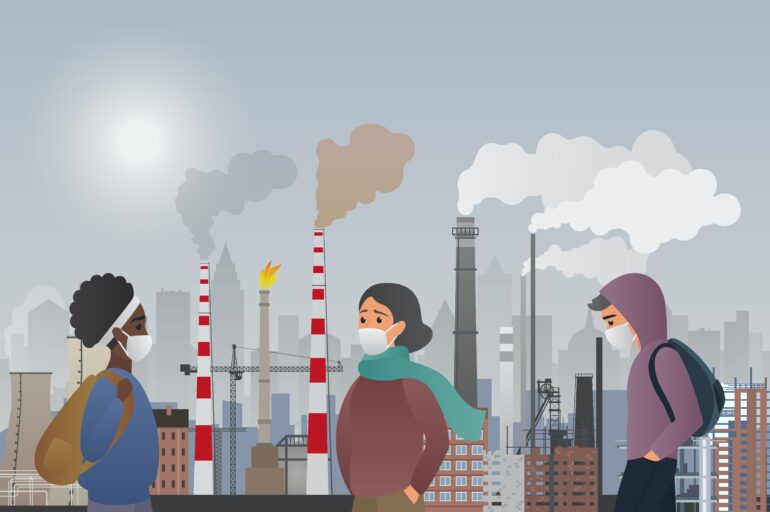Although COVID-19 infections are typically less severe in young adults, that doesn’t mean they aren’t still at risk of complications from COVID-19. For example, around one in 25 adults aged over 16 have reported suffering from long-term COVID-19 symptoms after their first infection. For some, these symptoms lasted for almost two years.
While we are getting closer to understanding some of the genetic and immunological mechanisms that cause long COVID, there’s still a lot we don’t know about the condition—including why people with otherwise mild COVID-19 infections go on to develop long COVID.
We also now know about some of the risk factors that make people more likely to develop long COVID—including suffering from chronic diseases and having an unhealthy lifestyle. And our latest study has now revealed that, at least for young adults aged 26–28, where they live may heighten their risk of long COVID.
While most people recover from a COVID-19 infection after a few weeks, for some people their symptoms may continue to persist for months or even years afterwards. The most common symptoms include extreme tiredness, loss of smell (or taste), muscle aches and shortness of breath, though other symptoms—such as brain fog—have also been reported. While there is no one test for long COVID, a doctor may diagnose the condition through blood tests, checking blood pressure or chest X-rays.
Our study found that young adults who lived in highly polluted areas were more likely to suffer from long COVID compared to those living in areas with low levels of pollution.
Air pollution and COVID-19
In our latest study, published in The Lancet Regional Health Europe, we investigated the impact of long-term air pollution exposure on risk of long COVID in young adults.
To conduct our study, we used data from the ongoing BAMSE birth cohort. This study began in 1994 in Stockholm County, Sweden and recruited 4,000 newborns—many of whom are still being followed today. Participants were given frequent questionnaires and participated in clinical examinations during childhood and adolescence to track various aspects of their health.
Between August 2020 and February 2022, participants attended a COVID-focused follow-up. Among the 753 study participants who’d had COVID, almost one in six who’d had a mild or moderate infection reported suffering from lingering symptoms for two months or more. The most common persistent symptoms reported were altered sense of smell or taste, shortness of breath and extreme fatigue.
We then estimated the level of air pollution participants were exposed to before the pandemic by looking at pollution levels at their residential addresses. We found that being exposed to relatively high levels of air pollution in 2019—especially fine particle air pollution, which primarily originates from traffic—was linked with a 28% greater likelihood of having long COVID compared with those living in low-pollution areas.
This association remained even after taking into account other factors potentially linked with both greater COVID risk and exposure to air pollution—including socioeconomic status, whether they smoked and if they had any other health conditions (such as asthma).
The association between air pollution and likelihood of developing long COVID were also stronger for specific long COVID symptoms—particularly those relating to respiratory health, such as shortness of breath.
Air quality
Air pollution is the fourth leading cause of death worldwide. It’s linked to multiple diseases, including asthma, chronic obstructive pulmonary disease and stroke, as well as COVID-19.
Our study is now the first to link air pollution exposure with long COVID in young adults.
It’s currently unknown why air pollution may be linked to long COVID. But based on what we know from other studies on the harms of air pollution, one potential explanation could be because air pollution triggers inflammation in many tissues and organs of our body. While inflammation is the body’s way of protecting itself from harmful pathogens—such as bacteria or viruses—it can also be harmful and destructive to the body itself. Thus, long-term inflammation linked to air pollution exposure may trigger the range of symptoms people report experiencing with long COVID.
But it will be important to continue exploring other possible mechanisms, including genetic and immunological factors, that explain why people living in highly polluted areas are more likely to develop long COVID. It will also be important to explore whether there’s a similar link between air pollution and long COVID in other age groups.
And, since our study was conducted before most participants had received the COVID-19 vaccine, future research will need to take this into consideration and evaluate whether vaccination alters this link at all. These will be the focus of our next follow-up study with this cohort.
We hope that our findings will add to our understanding of long COVID, which may in turn help us better know how to diagnose and treat the condition. Our research also further adds to the current body of evidence showing just how harmful air pollution is for human health. Given everyone is somehow exposed to air pollution in their lifetime, it’s clear more needs to be done to reduce air pollution levels worldwide in order to improve all aspects of health.
More information:
Zhebin Yu et al, Ambient air pollution exposure linked to long COVID among young adults: a nested survey in a population-based cohort in Sweden, The Lancet Regional Health—Europe (2023). DOI: 10.1016/j.lanepe.2023.100608
This article is republished from The Conversation under a Creative Commons license. Read the original article.
Citation:
Long COVID linked to air pollution exposure in young adults, says new study (2023, March 8)



